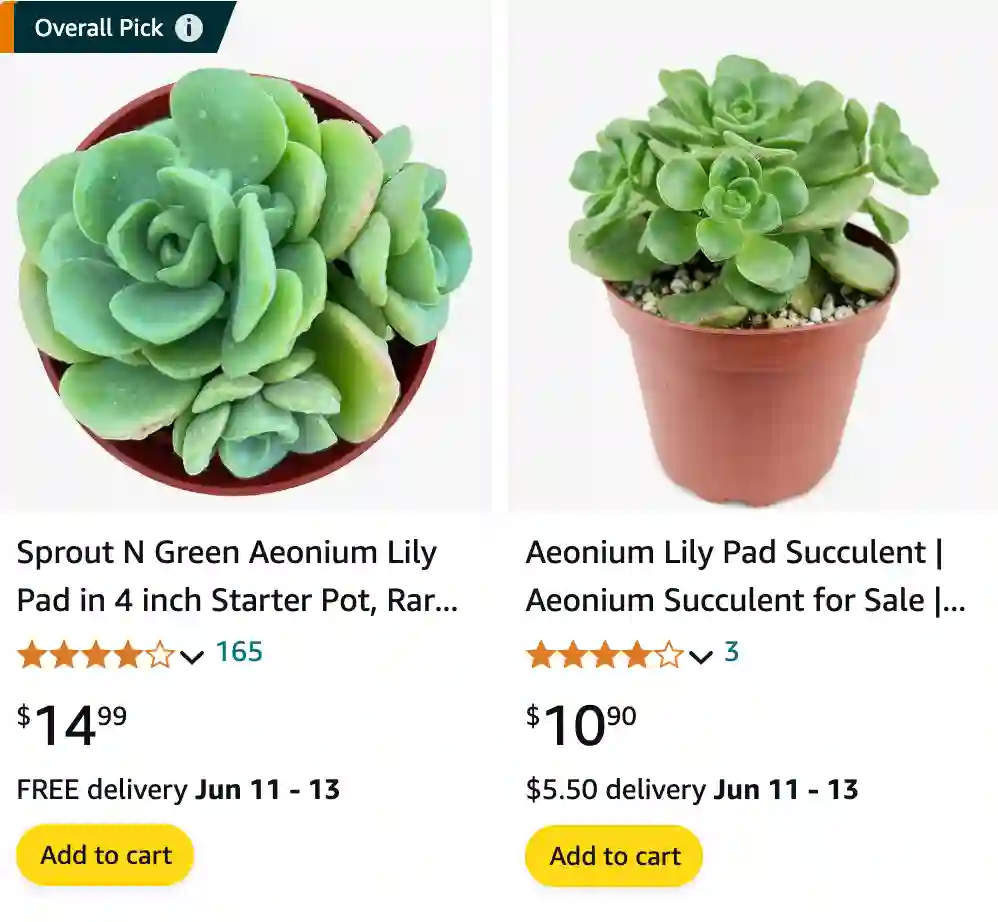
Aeonium Lily Pad: My Experience with this Charming Succulent
The world of succulents is vast and captivating, offering a diverse range of shapes, sizes, and textures. Among them, the Aeonium Lily Pad has become a particular favorite of mine. Its name perfectly captures its essence – fleshy, circular leaves arranged in a rosette that resembles a lily pad floating on water.
What is an Aeonium Lily Pad?
The Aeonium Lily Pad is a captivating succulent hybrid believed to have Aeonium nobile as a dominant parent. Some suspect Aeonium lindleyii may also be involved in its lineage, but its exact origins remain a delightful mystery.
This succulent boasts thick, fleshy leaves that have an almost leathery feel. When bathed in full sun, the older leaves often develop lovely shades of orange and yellow, adding a touch of warmth to the vibrant green. Unlike some Aeoniums that sprawl outwards, the Lily Pad maintains a more upright growth habit, with rosettes forming on a tall stem.
How to Care for Your Aeonium Lily Pad?
The beauty of the Aeonium Lily Pad lies not just in its appearance, but also in its ease of care. Here are some key things to remember to keep your Lily Pad thriving:
- Light: Aeonium Lily Pad prefers bright, indirect light or full sun. Too much shade can lead to leggy growth with spaced-out rosettes. South-facing windows are ideal, but ensure some protection during the hottest part of the day, especially in harsh climates.
- Water: These succulents are drought-tolerant champions. Overwatering is the leading cause of problems, so allow the soil to dry completely between waterings. During the winter, watering can be reduced even further.
- Soil: Well-draining soil is crucial to prevent root rot. A succulent or cactus mix is perfect, or you can create your own by combining potting mix with perlite or sand for added drainage.
- Temperature: The Aeonium Lily Pad thrives in moderate temperatures, ideally between 65°F and 75°F (18°C and 24°C). It can tolerate short periods of cold down to around 40°F (4°C) but should be protected from frost.
How to Propagate Your Aeonium Lily Pad?
Sharing the beauty of your Aeonium Lily Pad is easy! Here are two methods for propagation:
- Offsets: Mature Aeonium Lily Pads often produce offsets, or small rosettes, at the base of the main plant. These can be carefully removed with a sharp knife once they reach a manageable size. Allow the offset to callous over for a few days before planting it in well-draining soil.
- Leaf Cuttings: Individual leaves can also be used for propagation. Simply twist a healthy leaf off the stem and allow it to callous over for a few days. Then, lay the leaf flat on well-draining soil, partially burying the base. With time, roots and a new rosette will develop.
Will My Aeonium Lily Pad Die After Blooming?
Aeonium Lily Pad blooms with vibrant yellow or orange flowers in midsummer, adding a delightful pop of color to its already charming form. However, unlike some monocarpic succulents that die after flowering, the Aeonium Lily Pad is a polycarpic succulent. This means it can bloom repeatedly throughout its lifespan, continuing to grace you with its beauty for years to come.
What to Plant With Your Aeonium Lily Pad?
The Aeonium Lily Pad’s architectural form and vibrant colors make it a versatile companion for other succulents. Here are some ideas for creating a stunning composition:
- Echeveria: The rosette-forming Echeveria complements the Aeonium Lily Pad’s shape, while its diverse colors offer endless design possibilities.
- Sedum: Trailing Sedums add a cascading element to the arrangement, softening the overall look.
- Graptoveria: These stunning hybrids combine the beauty of Echeveria and Graptopetalum, creating eye-catching rosettes that pair well with the Lily Pad.
- Cacti: For a touch of the desert, certain cacti with similar light and watering requirements can be delightful companions. Opt for low-growing varieties to avoid overshadowing the Aeonium.
Conclusion: A Rewarding Succulent Experience
The Aeonium Lily Pad is a captivating succulent that offers a delightful combination of beauty, ease of care, and interesting propagation possibilities. With its charming lily pad-like rosettes and vibrant blooms, it’s sure to become a treasured addition to your succulent collection. So, why not give this low-maintenance wonder a try and experience the joy of nurturing your very own Aeonium Lily Pad?




